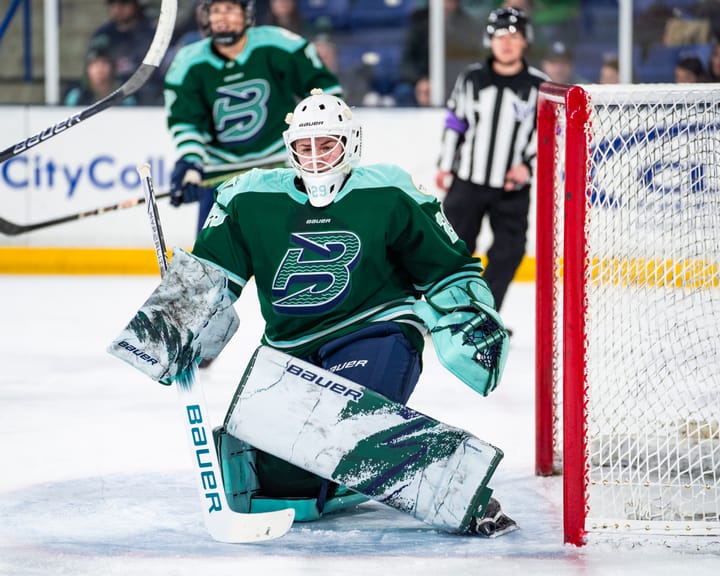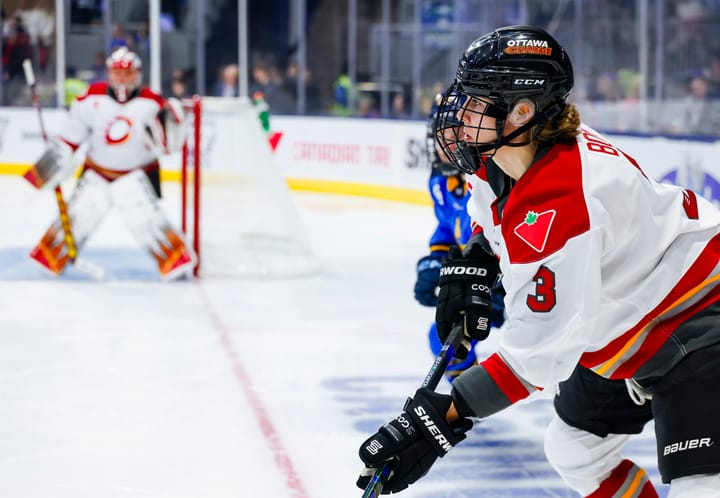3 ups, 3 downs of the Dream Gap tour
As the PWHPA heads to a break, what’s worked and what hasn’t for the organization’s first three stops
At the end of August, the PWHPA announced their Dream Gap Tour with three stops spread over six weeks in September and October. Organized in a short time frame, the organization has no other tour stops in 2019 in order to plan for the 2020, and beyond.
With a break in their action, let’s look at what worked and where they stumbled in the first stops.
Ups
The level of play
This is no surprise given the talent on the rosters. There were definitely some chemistry struggles in learning to play with players they’ve never played with before, but for a large majority of all 12 games, the play had great flow
If anyone was at a massive disadvantage, it was the goaltenders. It could have been due to the unpredictability of play or the small amount of game-speed action they see, but scoring was high. Granted that does make for an exciting game, but poor goalies.
Strong attendance
In an interview with SportsNet, Jayna Hefford said all three stops sold out. Social media postings and photos show off the large crowds in almost each city. Chicago sold out weeks before the puck even dropped.
Given the short time frame in which the PWHPA put these stops, it’s no small feat to sell out theses venues, especially with the lack of traditional marketing. It’s a credit to their social media branding and the push of the players to get people in the seats.
In selling sponsorships to companies, having strong attendance right off the bat gives them more leverage and more asking power.
Attracting big-name sponsors
Unifor, Dunkin’, and Magellan were the title name sponsors of the three stops. While Magellan is the most localized sponsor - as the global company is based in the Chicagoland area - it still has a lot of brand name recognition in the region. Other sponsors included Budweiser, Adidas, and Bauer. These are not names to sneeze at. Adidas and Bauer helped outfit the players while Budweiser sponsored a bar in Toronto and helped with streaming across all three cities. The key will be to continue to attract large-names sponsors, and have them stick around.
Related
5 cities the Dream Gap Tour should stop in
Downs
No stats
Across all 12 games, not a single box score nor stats sheet was made available. To see who scored, you had to track the games by hand while watching. This made reporting on the actual game play tough at times, especially if you couldn’t be there in person or if there was no stream as was the case for the consolation game in Chicago. Lack of stats also makes reporting on player progress across the tour difficult.
Part of the PWHPA’s mission of is “to promote, advance, and support a single, viable professional women’s ice hockey league in North America that showcases the greatest product of women’s professional ice hockey in the world.”
How can they empirically showcase their product if there’s no data to prove it? Without data it’s just a sales pitch.
New Hampshire venue
By all accounts, the Sunday event in Hudson, New Hampshire was the worst-attended day of all. A rough estimate puts about 100 people in the stands of Cyclone Arena, located about 40 miles from Boston. This was in stark contrast to Saturday, when the arena was packed full, including standing room around the edges.
It begs the questions of why - why play an hour outside of Boston, an area renowned for its thriving women’s hockey scene, and why did Sunday’s attendance drop so much?
The first question can most likely be attested to the short planning time frame. Securing ice on such notice can be difficult, let alone the amount of ice they needed.
The second is related to the first. It’s at least 80 miles round trip from the Boston area to Cyclone Arena. If you live south of Boston, the drive is even longer. Doing that twice in two days can be tough. Having to find lodging comes at an additional expense, which may have deterred fans from making it a full weekend, leading to the sharp drop in Sunday’s attendance.
The PWPHA has connections in the Boston area. More foresight in planning this event would have gone a long way.
Issues with pronunciation
Somehow the pronunciation of players’ name started badly and then got worse.
In New Hampshire, both the stream play-by-play and the in-arena announced couldn’t pronounce even the easiest of names. The French names? Good luck. At times the issue went beyond incorrect pronunciation and into straight-up inaccuracy for some of the best-known hockey players on earth, like calling Marie-Philip Poulin the wrong name. In Chicago, it got worse, and Twitter took notice.
As Dr. Courtney Szto wrote on Hockey In Society, “When names are read incorrectly over the PA system it reinforces the side-show nature of women’s hockey that we’re trying to correct. It feels like women aren’t worth the extra time and effort.” She and Maria Tassone, who is quoted in Dr. Szto’s piece, also point out that the inability to pronounce names hinders marketing as well as visibility.
Were you a little miffed about how player's names were said this past weekend? Well, you weren't the only one. Thanks to @heymariat and those who helped behind the scenes with this one. New for @HockeyinSociety https://t.co/gERdRCDuyu
— Dr. "Despa"-Szto (@courtneyszto) October 21, 2019
If the mission of the Dream Gap Tour and the PWHPA is to showcase what they want a professional league to look like, getting the most basic facts correct is critical.





Comments ()